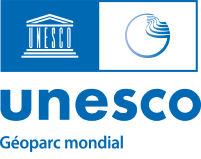Droughts, water shortages, fire hazards, temperature changes... The effects of climate change are already visible on our territory and will be even more marked in the decades to come.
Certain possible consequences resulting from climate change, such as the sanitary risks, the impact on agricultural productions and water resources, need no debate. It is a given that necessary mechanisms to counter the potential effects will be implemented. The notable acceleration of these phenomena will increase the structural environmental fragility of the territories, with multiple consequences on the populations, economic activities and biodiversity: increased risk of flooding, long periods of drought, fires, mass extinction...
In this context, the Park & Geopark wanted to study in greater detail, the effects of these changes on the territory in order to anticipate possible adaptations as much as possible.
Fine-scale modelling
The work of the IPCC (Intergovernmental Panel on Climate Change) forecasts different scenarios (called RCP - Representative Concentration Pathways) of future climate change on a global scale according to greenhouse gas emissions. For example, by 2100, the increase in global average temperature could be between +1.3°C and +4.1°C and episodes of high heat could increase in frequency and duration, with strong variations from one area to another.
So from a practical point of view what does this mean at the territory level?
The Park has initiated a fine-scale modelling of climate change, in partnership with the Université de Caen Normandie (Olivier Cantat, teacher-researcher HDR and geographer-climatologist attached to the "Coastal-Environment-Remote Sensing-Geomatics laboratory).

The spatial disaggregation model consists of using climate simulations on medium-sized surfaces (1) (8 km * 8 km grid), going down to finer resolutions (2) by integrating various parameters already known at this level (3). Here, we used the relief data, with a resolution of 25m for a result close to the 1:25000 topographic maps.
It is because there is an explanatory statistical relationship between relief and climate variables (temperature, precipitation) that the spatial disaggregation model is possible.
From April to September 2022, an internship mission was carried out along these lines by Hugo Fontaine in order to spatialise the climate models at the Normandie-Maine Park and Geopark with a reference period for the "past climate" from 1976 to 2005, and two temporal projections:
- Horizon 2050 (close)
- Horizon 2070 (medium)
... from IPCC scenarios modelling possible climate futures:
- RCP 4.5 (median, current path)
- RCP 8.5 (pessimistic)
Three variables were mapped as annual and monthly averages: temperature, precipitation and water deficit. The productions were compiled in the form of a cartographic atlas.
An aid to decision making
One of the objectives of spatialising the climate variables of future models at the territorial scale is to study the risks associated with climate change, such as fire, drought and erosion risks and to define areas at risk.
The spatialisation model is being improved to take into account other parameters and thus provide the most accurate keys to understanding. In 2023, the Park will propose to each of the inter-communities on its territory that the same analysis is carried out at commune level, thus making it possible to feed data into their PCAET (Territory Climate Air Energy Plan)
The first results, data and analysis, will be published online in early 2023.



